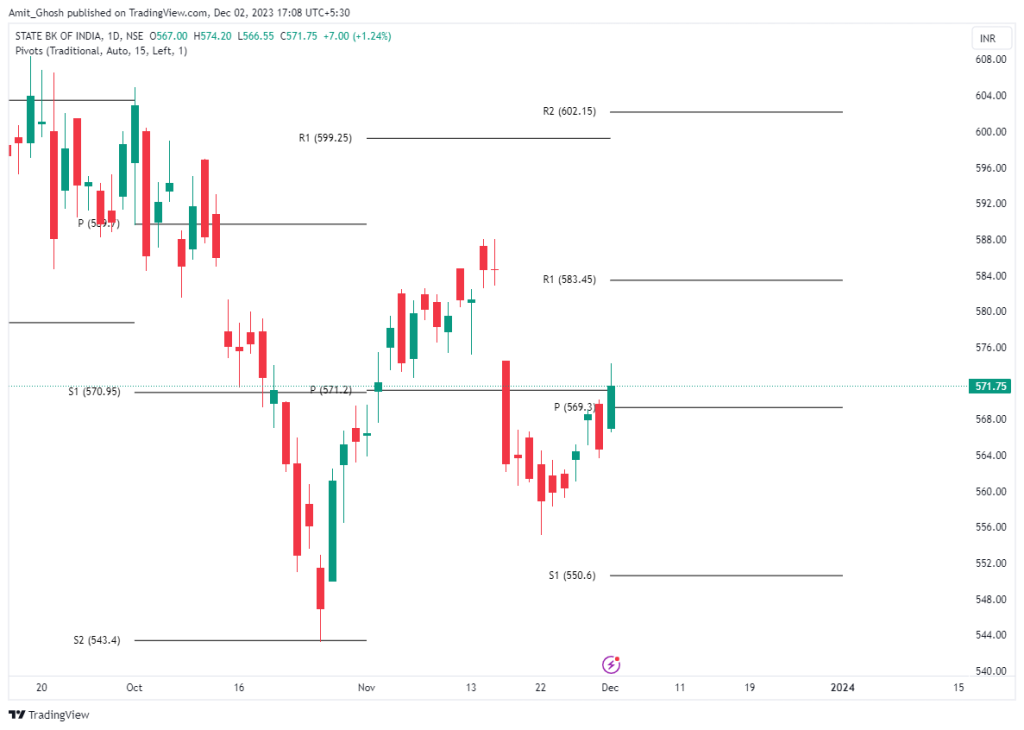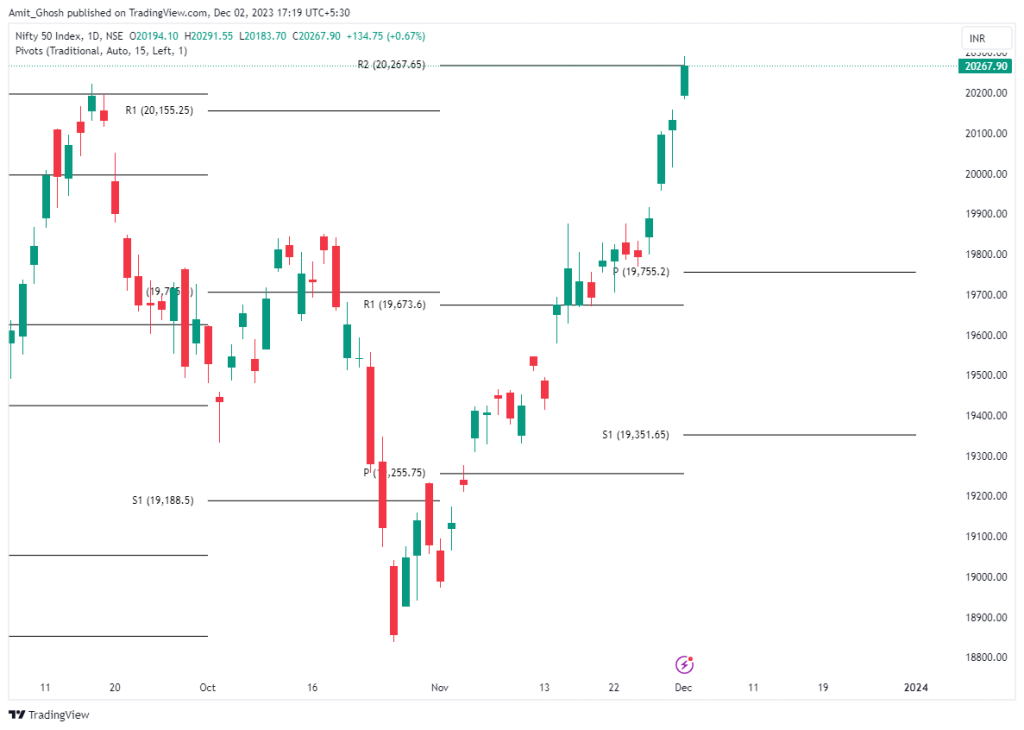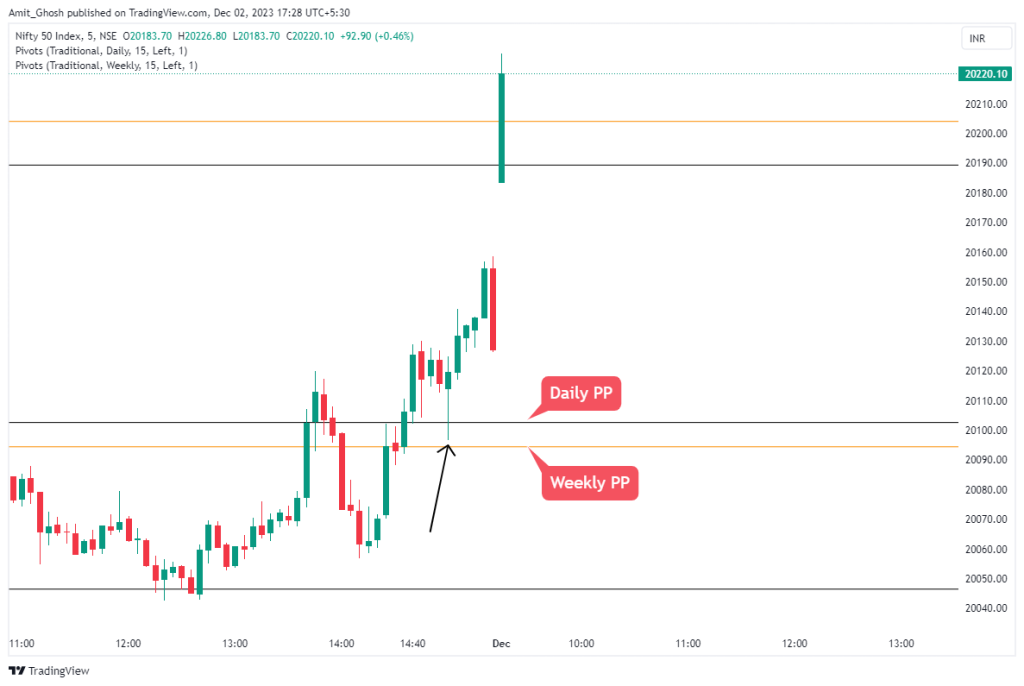Pivot Points
In this chapter you will learn –
- What pivot points are.
- Why they are important.
- How they are calculated.
- How they are used
- How to increase the probability of a trade setup.
What are Pivot Points?
Pivot points are a way of determining key support and resistance levels.
Before computers and charts became a key tool that traders used so effectively, floor traders used calculations based on the data from the previous trading day to determine key buying and selling levels for the current day. They are still extensively used today as they can act as support and resistance levels which are very useful in determining entry and exit points.
There are different types of pivot points that are calculated using previous market data. Most commonly, the previous days open, high, low and close are used.

Why Pivot Points are important?

The previous session’s data is used to calculate the main pivot point, the point at which the market is said to pivot around. Once this has been calculated, the main pivot point is then used to calculate the other pivot points.
- The pivot points above the main pivot are labelled as resistance pivots, notably R1, R2 and so on.
- Pivot points that are below the main pivot are support pivots labelled S1, S2 and so on.
These pivot points are usually derived using a 5-point system, which includes:
- The central median pivot point (PP)
- Two levels of resistance, marked as (R1) and (R2)
- Two levels of support, indicated as (S1) and (S2)
Mid-pivot points
Mid-pivots, the pivot points that lie between the main pivot points, have distinct labels.
The mid-pivot found between S1 and S2 is labeled as M1, while the one between S1 and the main pivot is known as M2, and this naming pattern continues accordingly.
How Pivot Points are calculated?
Calculating pivot points
When the calculations mention a price, they refer to the price from the previous period. For instance, the closing price is taken as the closing price from the previous day.
Pivot Point (PP) = (Previous High + Previous Low + Previous Close) / 3
Once the Pivot Point is calculated, support and resistance levels can be derived by using the Pivot Point as a reference point. The formula for calculating support and resistance levels using the Pivot Point is:
- First Resistance (R1) = (2 x PP) – Previous Low
- First Support (S1) = (2 x PP) – Previous High
- Second Resistance (R2) = PP + (Previous High – Previous Low)
- Second Support (S2) = PP – (Previous High – Previous Low)
- Third Resistance (R3) = Previous High + 2 x (PP – Previous Low)
- Third Support (S3) = Previous Low – 2 x (Previous High – PP)
In this formula, the First Resistance and First Support levels are considered the most important, as they are derived directly from the Pivot Point. The Second and Third Resistance and Support levels are used as additional levels, in case the price moves beyond the First levels.
Calculating mid-pivots
Mid-pivots are simply halfway between the main pivot points. The calculations for mid-pivots are as follows:
M1= (S2+S1)/2
M2= (S1+PP)/2
M3 = (R1+PP)/2
M4 = (R2+R1)/2
How Pivot Points are Used?
When trading using pivot points, the general rule is if the price is trading above the daily pivot, the market is going up and so our bias should be long.
The main resistance levels are R1, R2 and R3.
But all pivot points can be used as both support and resistance levels in certain instances. For example, if the R1 pivot level gets broken as resistance, it can then act as a potential support once price moves back to it.
If the price is trading below the daily pivot, then our bias should be short. The main support levels are S1, S2 and S3.
If the S1 pivot level gets broken as support, it can then act as resistance when the price retraces back to it.
We can also use pivots as targets for taking profits.
Targeting the next pivot point can give the trader a consistent way of taking profits.

For example, in the above chart, we bought at the daily pivot, we could take profits at the R1 pivot.
As with all support and resistance levels, there is strength in numbers.
The more pivot points that we have lined up at a certain area on a chart, the higher probability there is of a price reacting to that area.
So, if weekly pivot point (Pivot Points calculated using weekly OHLC) and daily pivot point (Pivot Points calculated using daily OHLC) coincides in the same price, It will end up increasing the probabilities of price reacting to this area.

In this chart, You can see the weekly and daily pivot points are coinciding. The price reacted strongly from that range with a pin bar!
Conclusion
- Pivot points can act as very strong support and resistance levels and are calculated using the previous periods open, high, low and close.
- As with traditional support and resistance, once price breaks through a pivot point that was acting as support, it can then be used as resistance.
- And once price breaks through a pivot point that was acting as resistance, it can then be used as support.
- Pivot points can be used as targets once a trade has been placed.
- There is strength in numbers.
- The more pivots that cluster together on the chart, the stronger the support or resistance level will be.

